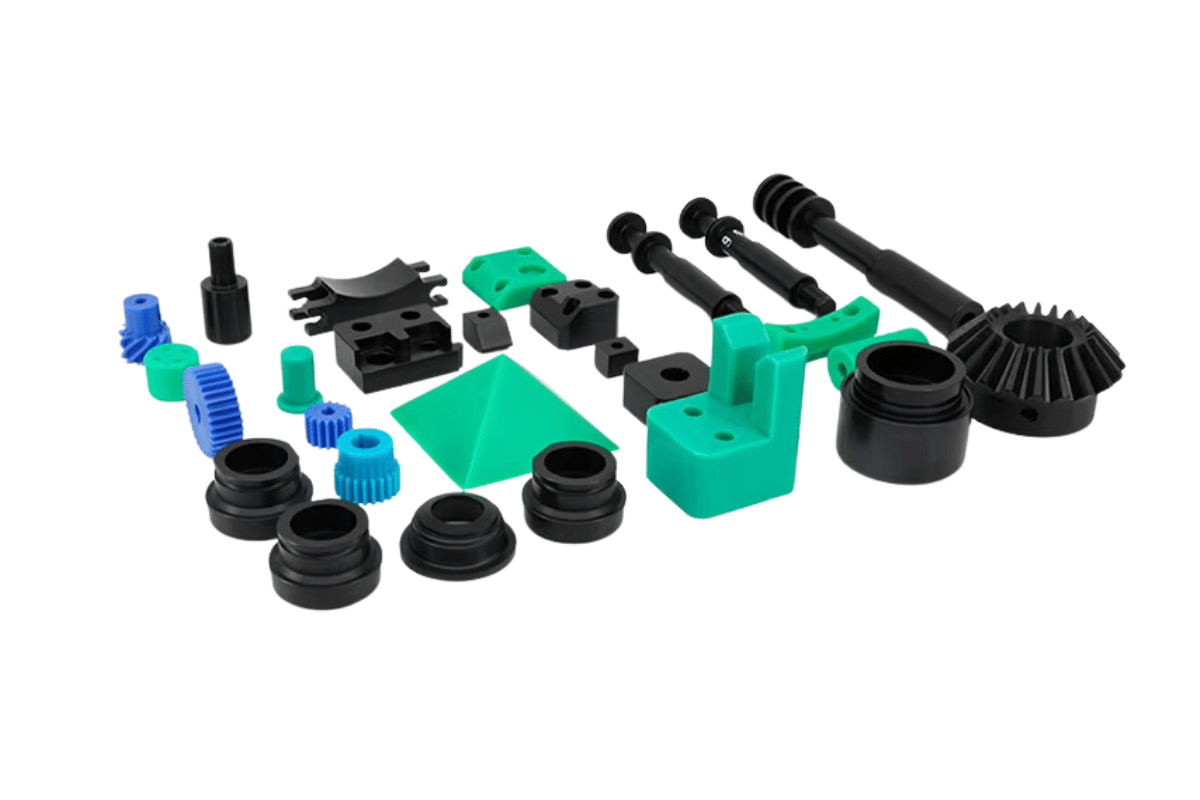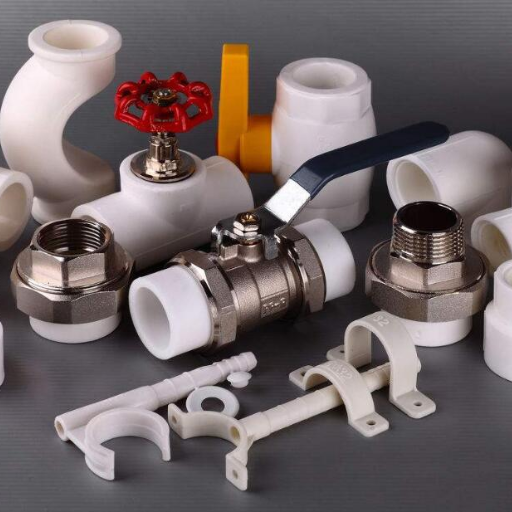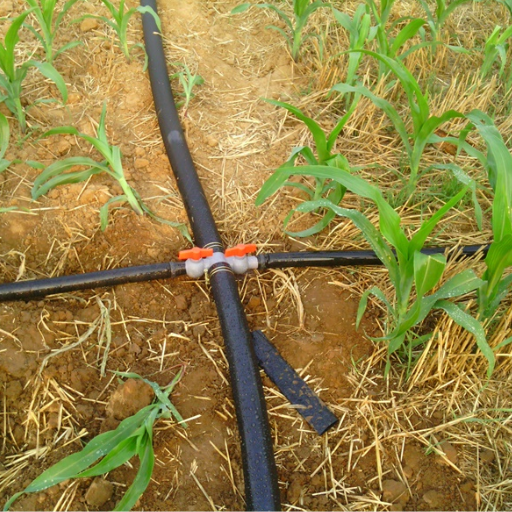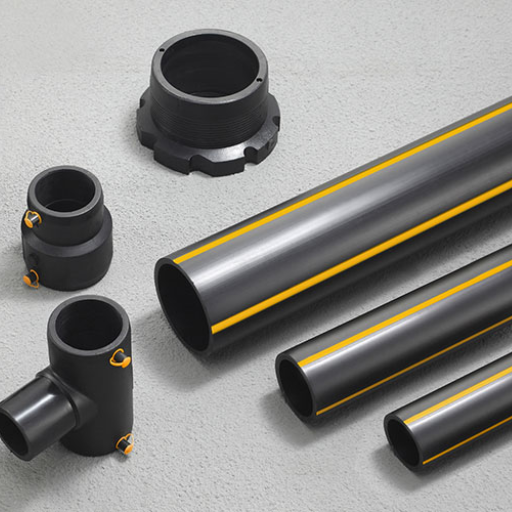Thermoplastic parts are now widely used in materials science for manufacturing and design. They can be heated and reshaped many times without losing their strength, so they are also versatile and durable. Different types of these materials will be discussed here, along with their use in various industries and advantages over conventional materials. Therefore, in this paper, we would like to demonstrate how thermoplastics can improve product performance and contribute to sustainability in production.
What are Thermoplastic Materials?

Image source: https://www.ensinger-pc.com/
Thermoplastic materials are polymers that become flexible or moldable when heated and solidified upon cooling. These plastics differ from thermosetting because they don’t undergo any chemical change, leading them to harden permanently; instead, they can be recycled repeatedly with little loss in quality. Polyethylene, polypropylene, PVC (polyvinyl chloride) – all these examples represent common types of thermoplastics that possess such properties as easy shaping ability combined with re-shaping capability, thus making them perfect for many applications including packaging materials; automobile industry components manufacturing process input/output interface; medical equipment, thereby highlighting their significance within contemporary productions.
Definition and Characteristics of Thermoplastic Polymer
Thermoplastic polymers are synthetic materials. These can be melted and reshaped many times by heating them. This is what makes them different from thermosetting polymers that harden permanently once set. They consist of long chains of molecules that may be linear or branched, so they become pliable again when heated. High impact resistance, excellent chemical stability, and a wide temperature range of usability are critical features of thermoplastic polymers. Besides, they have good processability because they can easily be manufactured into different shapes required for specific applications such as automotive parts and electronic housings, among other consumer goods where processing efficiency matters most while contributing to environmental conservation since their recycle-ability makes them more sustainable than conventional materials.
Common Types of Thermoplastic Materials
Among the various thermoplastics I studied were PE (polyethylene), PP (polypropylene), and PS (polystyrene). Polyethylene is used extensively due to its versatility and low moisture absorption, making it suitable for packaging films and containers. At the same time, polypropylene finds use in industries requiring high strength properties coupled with good elasticity, like automotive components and textiles; on the other hand, polystyrenes rigidity enables easy cutting during manufacturing stages and hence widely employed as disposable cutlery items and insulation products, each exhibiting how adaptable these resources can be across different sectors thus underscoring their relevance within production processes as well everyday life applications too.
Difference Between Thermoplastic and Thermoset
Regarding their physical properties and structural behavior when heated, thermoplastics differ from thermosets. The molecular structure of linear or branched type permits thermoplastics to be repeatedly re-melted and reformed without undergoing significant chemical changes. This characteristic makes them easy to process and recycle. Conversely, during heating a chemical reaction occurs in thermosets resulting into an infusible network structure that cannot be reshaped again once it is molded. Moreover, after curing, they have improved mechanical properties and heat resistance, making them suitable for such applications where high performance is required, like electrical insulators or automotive components. In general terms, while plastics offer flexibility and recyclability, composites give toughness and thermal stability.
How are Thermoplastic Parts Manufactured?
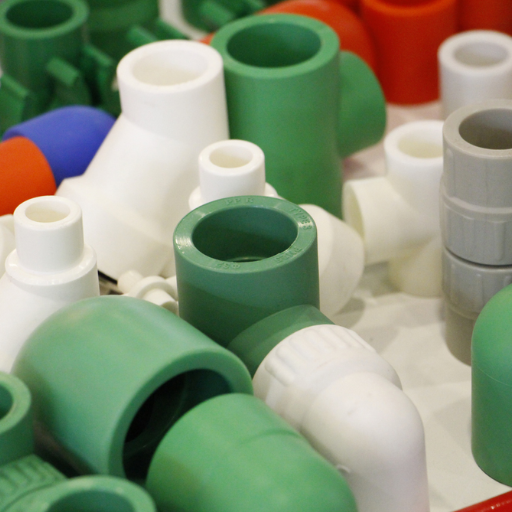
Typically, different methods are used to produce parts made from thermoplastic materials, including injection molding and blow molding extrusion. This involves melting plastic granules before injecting them under pressure into marvelous molds, where they solidify, forming desired shapes (usually complex ones). Hollow articles can also be produced by blowing air through hot tubes surrounded by chilled molds until outer layers are set, then releasing inside gas pressure so that inner layers flow outwards against cavity walls until all layers have cooled down sufficiently for demolding purposes; this method is called blow molding. On the other hand, extrusions create continuous profiles such as pipes or sheets by forcing molten material through dies having desired cross-sectional shapes followed by cooling either via water quenching tanks or air chilling systems, thereby taking advantage of the recycling capability inherent in these types of materials, which allows for energy saving aspects besides enabling manufacture intricate forms accurately.
Injection Molding Process of Thermoplastics
Several crucial steps are involved in the injection molding process for thermoplastics, which contribute to producing high-quality parts. Thermoplastic pellets are first fed in a heated barrel, then melted and mixed into a uniform substance. Next, under high pressure, the molten thermoplastic is injected into a mold that has been precisely designed. This allows the material to fill every mold cavity detail, creating the desired shape. The mold is opened to release the final product when cooled and hardened. This method is very effective, enabling fast production cycles with minimum waste. Injection molding can also create complex geometries and intricate features while holding tight tolerances, making it widely applied across different industries, from the automotive sector to the consumer goods industry.
Role of Mold in Thermoplastic Parts Production
I believe that molds are centrally crucial in terms of making any kind of thing out of thermoplastics. The accuracy of finish surface quality performance of everything about what eventually comes out as finished goods mainly depends on how well designed or manufactured these tools were in the first place since they are responsible for shaping molten plastics into desired shapes once filled with liquid polymers such as polyethylene terephthalate (PET). So if there’s anything wrong with them, nothing good will ever come out. A good mold conducts heat efficiently, which helps items cool uniformly, thus enhancing dimensional stability, but also saves time by having cooling channels through which water can flow rapidly alongside vents used to remove the air inside cavities during production … This complicated relationship between molds and processes involved when working with thermoplastics affects productivity levels achieved, cost implications incurred as sound meeting specific demands set forth by different customers alike.
Machinery Used for Injection Molded Plastics
The machines used for plastic injection molding are called injection molding machines. These machines can be classified into three main types: hydraulic, electric, and hybrid. The material is delivered and injected into the mold by hydraulic pressure in hydraulic machines. They have high clamping force, making them suitable for large and heavy molds. Electric machines use electric motors to drive the injection process. This makes them more precise and energy efficient, and it reduces cycle times while being eco-friendly at the same time. Hybrid machines combine hydraulic and electric technologies to perform better in different areas and be versatile. These machines have various parts, including a hopper where raw materials are fed, a barrel where thermoplastic is melted, and a clamping unit that holds the mold during the injection cycle. Maintaining and calibrating these machines correctly is essential if consistent quality is achieved throughout production during injection molding.
What are the Advantages of Using Thermoplastic Composites?
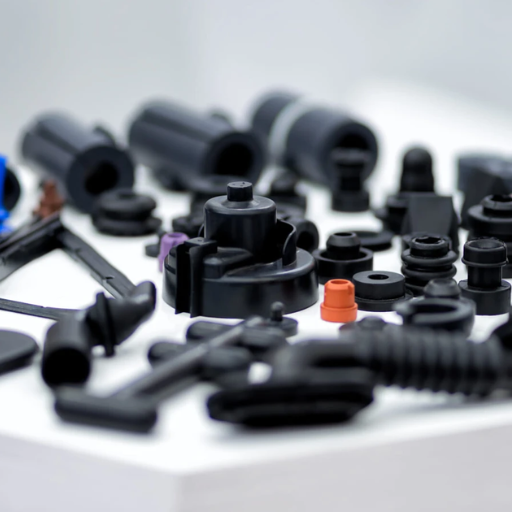
Thermoplastics offer many benefits over other types of material, especially in different sectors such as construction or automotive, among other industries across worldwide markets. First, they have excellent strength-to-weight ratios, meaning you can make lighter things that are still strong enough structurally speaking. Secondly, because these substances are easy to work with, manufacturing takes less time, increasing productivity. This category also has good resistance against chemicals and moisture, thus making them more durable in various applications. Another advantage here would be recyclability since most plastics from universal resource locator (URL) addresses were invented they will always align with sustainability goals thereby reducing their environmental impacts consistently. Finally, another one could say about versatility; there can never be any other reinforcement material whose properties can be tailored like those found within thermosetting resins considering performance requirements.
High-Performance Characteristics of Thermoplastic Composites
Thermoplastic composites are known for being high-performance, making them very useful in many applications requiring a lot of strength. That being said, some key performance features would be its incredible stiffness and strength, which makes it possible to create lighter structures that can bear heavy loads. They also have excellent thermal stability, so even if used at high temperatures, they will not deform while still maintaining their performance capabilities. Moreover, impact resistance is another area where this material shines through – energy can be absorbed and dissipated by thermoplastics effectively, thus improving safety levels and extending the component life span. These materials offer good fatigue resistance, too, meaning they can withstand cyclic loading for long periods without failing. Additionally, having the capacity to bend or reshape them using heat means designers have more options available when creating things from scratch, but when combined with reinforcements such as carbon fiber or glass fibers, tailored performances suitable for particular industrial requirements may be achieved.
Applications in the Aerospace and Automotive Industries
The aerospace industry uses thermoplastic composites widely because of their low weight-to-strength ratio and thermal stability properties—spacecraft are loaded with these things inside out! They mostly find applications in interior parts and structural components where lightweighting could significantly enhance fuel efficiency, leading to reduced emissions into the atmosphere; this is what I know about them.
Also, within the automotive domain, we increasingly see adoption rates rise for thermoplastic composites applied on body panels, structural members like beams & columns joints, etc., interior trims such as door cards or dashboards…you name it! One thing that cannot go unnoticed, though, is its lightweightness, which contributes significantly towards improving overall vehicle performance, but let’s not forget about durability either – cars made out of this stuff last longer than those made from other materials, plus require less maintenance work over time, thus saving money all around town! In conclusion, my observations point towards an increasing use of these two sectors because they represent a step closer to sustainable development goals and technological advancements in both industries.
Cost-effectiveness of Custom Thermoplastic Solutions
Particularly in high-volume production settings, custom thermoplastics are more and more being appreciated for their cost-effectiveness. Firms can minimize waste and save money by changing to manufacturing methods like 3D printing or injection molding, allowing them to use less material and streamline their production process. Further contributing to saving costs throughout the life cycle of a product is the fact that these materials are recyclable, which means products made from them could be re-purposed instead of being bought with more raw materials for new ones. Producers, conversely, can cut down time-to-market periods while improving competitiveness within their sectors by fast-tracking design modifications according to prevailing market needs through quick manufacturing speeds. In summary, therefore, integrating custom thermoplastic solutions offers businesses financial benefits that cannot be ignored if they want to be efficient and sustainable.
What are the Common Applications of Thermoplastic Parts?

Thermoplastic components have many uses as they are versatile and possess valuable properties, making them suitable for different sectors. For example, lightweightness combined with the strength required for good performance levels in safety-critical parts like dashboards used within the automotive industry is why thermoplastics find wide applications alongside other everyday items such as bumpers or interior trim pieces. Packaging materials – consumer goods sector; electronics (thermo plasticity provides low-cost complex shapes); medical industry implants surgical instruments diagnostic equipment where biocompatibility feature allows easy sterilization procedures. These plastics also work well as pipe works insulation floors, among other things, and are used widely across various construction sites due to their flexibility when exposed under different environmental conditions.
Use of Thermoplastics in Medical Devices
The exceptional compatibility with living tissue, adaptability in design, and capacity for sterilization are the factors that make thermoplastics vital in manufacturing medical equipment. Typically, they are applied to create things like syringes, tubes, or surgical tools, which demand high accuracy and dependability throughout use. Polycarbonate, among other materials, is employed due to its strength and resilience to chemicals, thus making it suitable for diagnosis and implants. It should be noted also that breakthroughs made on thermoplastic substances have resulted in better drug administration methods, thereby improving patient welfare during treatment without compromising health care provider’s safety within clinical settings.
Applications in Electrical Insulation
Thermoplastics are used extensively for electrical insulation because they exhibit excellent dielectric properties besides their ability to withstand temperature changes. I know that wire and cable insulations mainly consist of polyvinyl chloride(PVC), nylon, or polyethylene, which helps prevent electric current leakage, promoting safety across different applications. These types can easily take shapes of complex designs owing to their flexible nature, hence becoming applicable even to connectors or circuit boards where space may be limited. Furthermore, resistance against moisture plus chemical agents increases robustness and reliability levels for electric components, which must not fail under any circumstances, given that this significantly affects both industrial and domestic electronics’ performance. Therefore, employing thermal plastics for electrical insulation greatly enhances system safety and efficiency.
Utilization in Precision Components
Thermoforming plastics are essential in creating precise parts used in various industries, from car manufacturing to aerospace. They can be molded into complicated shapes with high accuracy on dimensions, which makes them suitable for creating delicate components like gears, bearings, and housings, among others. For instance, polystyrene or ABS (acrylonitrile butadiene styrene) are commonly employed because they possess high strength-to-weight ratios and excellent resistance against impact. This reduces weight, thus enhancing fuel economy in vehicles and increasing life expectancy and performance levels under extreme conditions where parts are frequently subjected to heavy loads. Another factor is that thermoplastics have been adopted extensively following advancements made within three-dimensional printing technology, enabling rapid prototyping and customization during precision engineering processes. Being adaptive and having outstanding performance characteristics make these plastics indispensable when producing items that require very tight tolerance limits and reliability.
How do Thermoplastics Differ from Other Plastics?

Another way of processing and properties differentiating thermoformed plastics from other types, such as thermosetting ones, should be known, too. Thermoplastics, unlike thermosets, don’t undergo any chemical transformation accompanied by hardening permanently after being heated; instead, they may undergo reheating followed by reforming many times without getting damaged externally or internally. Therefore, this feature allows for easier recycling and reshaping to become highly versatile across multiple applications where required again later on. On top of that, flexibility levels plus ductility associated with most thermoplastics are usually higher than those found in most thermosets, which tend to be brittle materials more prone to break easily when subjected to certain conditions, hence rendering them unsuitable for some uses where toughness is needed alongside cost-effective production methods at large scales too.
Comparison with Thermoset Plastics
There are many differences between thermoplastics and thermosetting plastics. Once cured by a chemical process, thermosets cannot be reheated or reshaped, resulting in a rigid structure that is often heat resistant and stable under stress. In contrast, they can be melted and reformed repeatedly, allowing them to be recycled easily and enabling speedy adjustments during manufacturing. Moreover, these materials have a higher impact strength and are generally more flexible than their counterparts, making them suitable for applications where durability and adaptability are required. Although thermosetting plastics offer excellent dimensional stability as well as resistance to chemicals and high temperatures, lack of reworkability and increased complexity in manufacturing processes may limit their application versatility, especially when quickness of the process or flexibility is desired; therefore, choosing between these two mainly depends on what one wants to achieve.
Material Properties of Thermoplastic vs. Thermosets
Throughout my study about thermoplasticity vis-à-vis thermo-setting nature, one thing became clear -the ability to be reshaped and recycled makes them versatile. Also known as elastomers, these retain their strength even at different ranges of temperatures, thus giving room for easy processing/manufacturing while still being flexible enough for other uses, too. On curing, it forms infusible structures with better dimensional stability against heat/chemicals than any other plastic type. It is considered suitable for high-performance applications where muscular rigidity is expected from such materials, but this cannot be done again after setting. Lack of ability to rework may sometimes pose limitations, especially when there is a need to change quickly over time, so the decision whether to use either should depend on specific needs required by the project, like ease-of-use offered by flexibility or durability provided by stability.
Recyclability and Environmental Impact of Thermoplastics
Because they can be recycled, thermoplastics are generally considered more eco-friendly than thermosets. Many thermoplastic materials can be melted and reformed, enabling them to have multiple lives. This reduces waste while decreasing new raw material demand, which makes production sustainable. For example, PET and HDPE plastics used often for packaging are easily recyclable, as indicated by various recycling initiatives worldwide. Nevertheless, the rate at which different types of thermoplastic are recycled depends largely on how well they are supported by local infrastructure and promoted among consumers.
However, it should be noted that the environmental impacts associated with thermoplastics go beyond their recyclability alone. These products tend to rely heavily on fossil fuels during manufacturing stages, leading to increased greenhouse gas emissions in our atmosphere. In addition, if not disposed of properly, these items may cause pollution within ecosystems where wildlife resides, thus endangering them further. To this end, continuous research efforts must focus on improving production methods, making more types of thermoplastic recyclable biodegradable, and finding substitutes that would decompose naturally to minimize their negative environmental impact.
What Innovations are Emerging in Thermoplastic Technology?
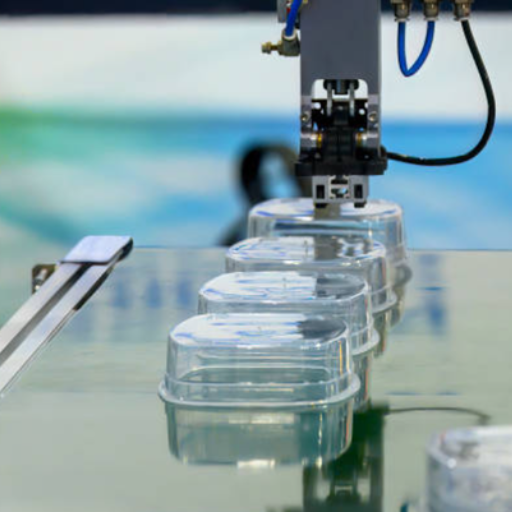
Presently, we are concentrating on recent developments in thermoplastic technology to make them more efficient and sustainable. One way of doing this is finding alternatives to petroleum when making these materials, such as using plant-based sources, which can be renewed. Besides that, scientists have also started studying how they can mix nanoparticles into plastic to enhance its strength and heat resistance, among other mechanical properties. Similarly, intelligent polymers are being created to detect changes in their environment and respond accordingly, thus enabling them to have many different uses, including acting as sensors. This is expected to improve how well things work and how easy it is for them to be recycled into something else, thereby reducing environmental impact at every stage of production even after use has finished. Another area where progress has been made involves printing objects three-dimensionally using thermoplastics; this allows greater freedom when designing such items as prototypes since there are no limitations imposed by traditional methods like molding or shaping.
Advancements in 3D Printing with Thermoplastic Materials
The use of thermoplastic materials in 3D printing has brought about many changes in the manufacturing process of different fields. One notable change is the creation of high-performance filaments such as Polyether Ether Ketone (PEEK) and Nylon, which provide better strength, heat resistance, and chemical stability for aerospace, automotive, and medical industry applications that require them most. In addition, Continuous Filament Fabrication (CFF) technology now allows 3D printed parts to be reinforced with continuous carbon or glass fiber strands, increasing overall mechanical properties while still keeping them lightweight.
Furthermore, software and printhead technologies are now more advanced, resulting in higher print speeds and resolutions; hence, complex designs can be realized while production remains efficient. Such improvements enable quick prototyping, reducing lead times and making it possible for thermoplastics-based 3D printing to create custom parts where necessary. For these reasons alone, various sectors have started embracing this kind of technology since it reduces waste and makes sustainable development feasible through localized production.
Future of Custom Plastic Parts in Various Industries
From what I can see, the future of custom plastic parts appears to be very bright, considering all the ongoing developments in 3D printing and environmentally friendly manufacturing methods. Businesses continuously strive to be more cost-effective and efficient, so I think intelligent materials and biodegradable plastics will become more widely used as they provide ecological solutions without compromising quality. Additionally, quick prototyping will foster collaboration between designers and manufacturers, enabling them to customize products according to specific client demands quickly. My dream is that one day soon, these types of advancements will not only meet functional requirements but also sustainable criteria, thus benefiting both companies and the environment.
Emerging High-Performance Thermoplastic Composites
Newly established lightweight, strong, high-performance thermoplastic composites possess exceptional characteristics such as chemical resistance and thermal stability; this has seen significant impacts across different sectors, including the aerospace industry. Some recent modifications have mainly focused on enhancing these substances’ mechanical properties, making them suitable for the automotive industry besides construction work. To optimize the utilization efficiency of materials during the production process, large players within the market space should incorporate advanced manufacturing techniques like automated fiber placement alongside injection molding where necessary. It is important to note that sustainability has become a significant concern; thus, biocomposites were introduced while thermoplastic elastomers gained popularity due to their flexibility. These kinds of inventions not only improve performance but also resonate well with eco-friendly trends being embraced by various businesses, thus marking a new dawn in material science.
Frequently Asked Questions (FAQs)
Q: What are thermoplastic parts, and how are they used in manufacturing?
A: Thermoplastic parts are made from pliable polymer materials when heated and solidified upon cooling. They are commonly used in manufacturing processes like CNC machining to produce plastic products efficiently.
Q: What types of thermoplastics are commonly used in industrial applications?
A: Common types of thermoplastics include nylon, polyethylene (PE), polypropylene (PP), polycarbonate, acrylic (PMMA), polystyrene, and high-performance plastics such as PEEK and PPS. Each has unique properties suitable for various applications.
Q: What are the benefits of using nylon as a thermoplastic material?
A: Nylon offers excellent strength, durability, and chemical resistance, making it ideal for applications like aircraft parts and composite materials. Its ability to withstand wear and tear makes it popular in many industries.
Q: How does PEEK compare to other thermoplastics in terms of performance?
A: PEEK is a high-performance plastic known for its exceptional thermal stability, chemical resistance, and mechanical strength. Due to its reliability under extreme conditions, it is often used in demanding applications such as aerospace and medical implants.
Q: Can thermoplastics be recycled, and how does that affect their applications?
A: Yes, thermoplastics like polyethylene and polypropylene are recyclable, which enhances their appeal in sustainable manufacturing practices. This recyclability allows for cost-effective production of plastic products while reducing environmental impact.
Q: What role do thermoplastic composite materials play in modern engineering?
A: Thermoplastic composite materials combine the benefits of thermoplastics with reinforcing fibers, resulting in lightweight, strong, and stiff parts. Due to their superior impact resistance and performance, they are widely used in the aerospace industry for aircraft parts.
Q: What is the significance of chemical resistance in thermoplastics?
A: Chemical resistance is a critical property of thermoplastics like PBT and PE, determining their suitability for various applications. It allows these materials to withstand exposure to harsh chemicals without degrading, making them ideal for automotive and industrial use.
Q: How does the geometry of a part affect its manufacturing using thermoplastics?
A: A part’s geometry plays a vital role in its manufacturability with thermoplastics. Complex geometries may require advanced CNC machining techniques to ensure precision and quality in the final plastic products.
Q: What are some typical applications of thermoplastics in the aerospace industry?
A: In the aerospace industry, thermoplastics produce lightweight components such as aircraft parts, interior fittings, and structural elements that require high-impact strength and durability while minimizing weight.


